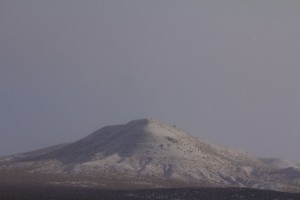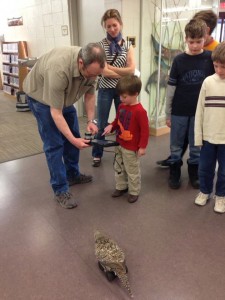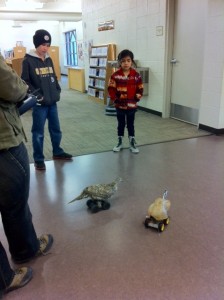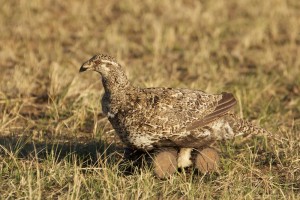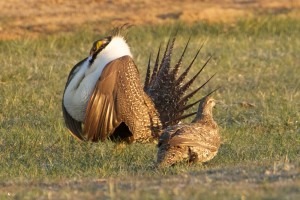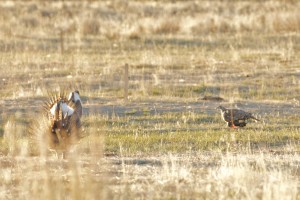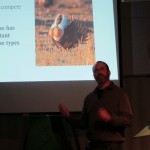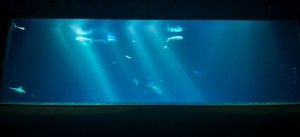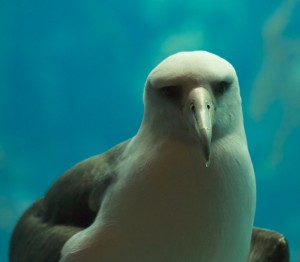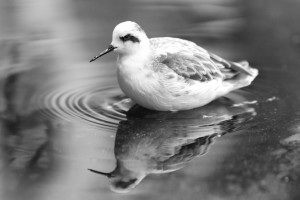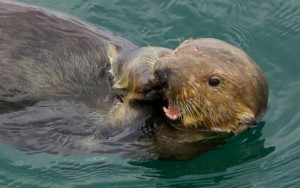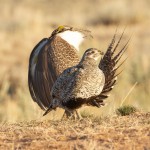It’s March 31st, and as we trundle towards April, I realize how tardy I have been with general updates this year. Every season is a little different, and this one is throwing us some curves.
We saw our first copulation on our biggest lek, Cottontail Lek ten days ago (March 21st). This date is pretty normal. We’ve found one earlier (March 19th) in a couple of years, and later some other years. Usually once we see the first one, within a few days every lek is showing multiple copulations. Not this year! We got hit with a blast of really cold weather (lows around 10℉) as well as a few inches of snow. The females seemed rethink their interest in the males, and it was several days later before we saw the next mating on any of the leks. So while the breeding season opened at a fairly average time, I think the season as a whole is going to be on the late side. On balance, I’m not sure if this will be good or bad for our work this year. The longer we have big groups of real females on the lek, the harder it will be to give our robotic females a private audience. On the other hand, the males may stay interested in courtship a little bit longer so we may not have the problem of the males just giving up at the end of the season the way they sometimes do. We’ll have to see what happens!
Other challenges we’ve had to contend with are the incredible shrinking leks. Our initial impression from the first couple of weeks of the season seems to be correct– male attendance is down considerably from last year in our area. This may be due to the drought the Lander area is experiencing, at least there’s not an obvious other candidate for the decline. Our sage-grouse manager contacts have mentioned that the rough demographic analysis from hunting data suggested low recruitment (not many yearling birds taken compared to the number of adults).
To give you a sense of the change in abundance since we started the project here: Monument Lek, our main focal lek since 2006 when it had over 100 males, has dropped to under 10 birds and males are not staying as reliably on their territories. Anna has still gotten some playback experiments done, but Monument is right on the edge of being useful or not as one of our experimental leks. We just showed the PBS Nature episode featuring our research (“What Females Want…”) as part of another outreach event down at the Lander Public Library. The footage was shot in 2007 when the male counts were an order of magnitude higher. The difference definitely makes us a little sad, and we are hoping this lek rebounds quickly as it has done in the past. Sue at the BLM told us that in the 80’s it was down to 4 birds, and later climbed back to over 100, so we hope this is another one of those cycles.
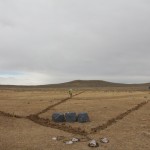
Shallow trenches prepared for laying microphone cables at Monument Lek. This lets us put microphones all over the lek, while keeping the cables underground. The speakers are for the playback experiment.
Otherwise we are in pretty good shape with most of our “normal” tasks. We have microphone arrays deployed on all three focal leks now, and have gotten several days of sound recording in. We’ve also gotten at least one round of counts at our non-focal leks, to help the local sage-grouse managers monitor the grouse population in the district. The only things we are missing are the new robots (Gail is working on taxidermy aspects now, so those should be ready soon), and the encounternet telemetry tags. I say “only”, although those are definitely two very important pieces for our research goals this year and in the next couple of years!

